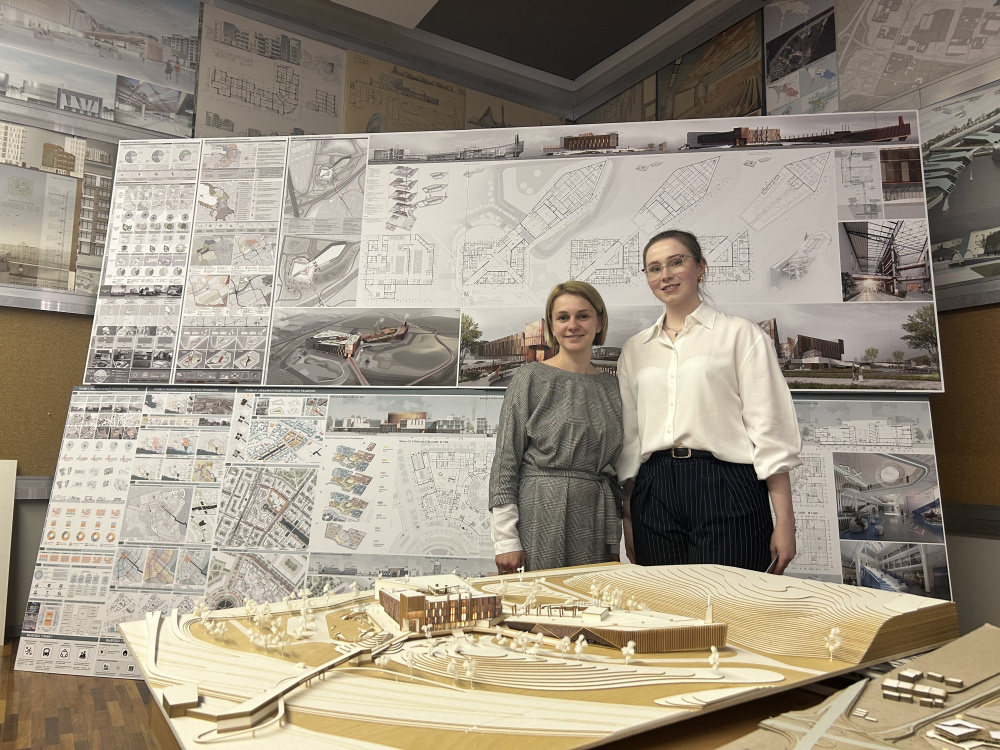 Valeria Supranovich, Arina Safronova
Valeria Supranovich, Arina Safronova
SPbGASU has proven that the aesthetics of a solid municipal waste (SMW) handling facility increases its energy efficiency, energy conservation and environmental friendliness throughout its entire service life.
During her five-year research, Valeria Supranovich, PhD of Architecture and Associate Professor at the SPbGASU Department of Architectural Design, identified a number of possible high-quality architectural solutions that, in conjunction with technological self-sufficiency systems for buildings and facade elements, will allow them to organically fit into the urban system. The associate professor also developed ways to integrate additional public functions into these facilities at various economic costs. All this will help to implement the goals of sustainable development in the architecture of solid waste management facilities. Valeria Supranovich completed this research work, “Methods of functional planning organization of solid waste management facilities in Russia,” within the framework of the 2025 grant for research and teaching staff at SPbGASU.
Since March 2024, amendments to Federal Law No. 451 "On production and consumption waste" have come into force, which have completely updated the waste management system and the regulatory process in terms of extended responsibility of the manufacturer of goods. Moreover, within the framework of the programs of the XXIV International Forum "Ecology of the Big City" and the St Petersburg International Economic Forum, held in St Petersburg in 2025, agreements were signed to finance projects for the construction of waste disposal facilities, the creation of the necessary infrastructure to reduce the percentage of waste disposal and the country's transition to a "closed loop" economy (a production and consumption model that involves reuse, recovery and recycling of existing materials and products for as long as possible) to achieve the goals of sustainable development of the country. This is a powerful impetus for the active implementation of solid waste management facilities in the existing urban system.
"Today, approaches to the design of solid waste facilities and the facilities themselves do not meet the goals of sustainable development, as they are considered economically inexpedient. However, in the course of scientific research conducted from 2020 to 2025, I was able to identify the opportunity to revise the existing methods of project activities. One example of waste management facilities that meet the goals of sustainable development is the world's largest W2E plant "Shenzhen Energy Ring" (Shenzhen, China). The new plant is designed to process 5,000 tons of waste per day and simultaneously produce 600 million kilowatt-hours per year. The facility has a round shape, not typical for manufacturing enterprises, to combine all production units into a single structure and simultaneously reduce the area of the plant, includes zones for the formation and popularization of waste disposal procedures, and photovoltaic panels are provided for on the roof. The architecture of the facility is not utilitarian, it corresponds to the context of the environment," explained Valeria Supranovich.
In the course of the current scientific research, she studied the theoretical components of the concept of "sustainable architecture" and proposed a system of their interaction. It was established that the aesthetic qualities of the object allow not only to humanize the appearance of the enterprise, but also to ensure high energy efficiency, environmental friendliness and energy saving of the building throughout the expected service life. The goals of sustainable development in the architecture of waste management facilities should be implemented taking into account their typological affiliation, Valeria Supranovich clarified.
Some theoretical results of this study were implemented in her diploma work “Technopark complex with waste processing function, Saint Petersburg, Yuntolovo district” by a graduate of the master’s program of the SPbGASU Department of Architectural Design Arina Safronova (supervisor – Valeria Supranovich).
*The data is based on the results of the SPbGASU 2025 grant.